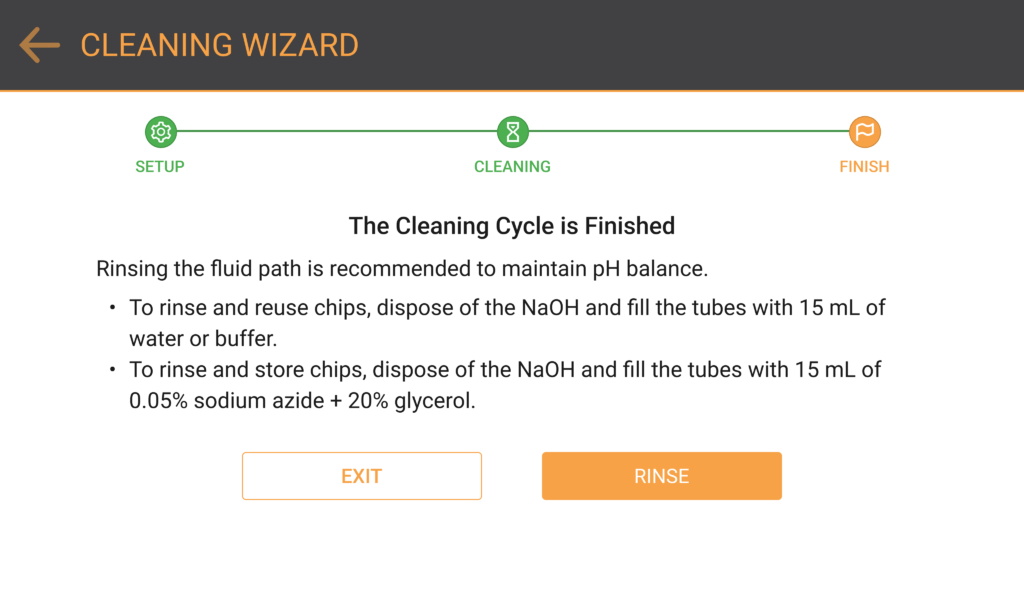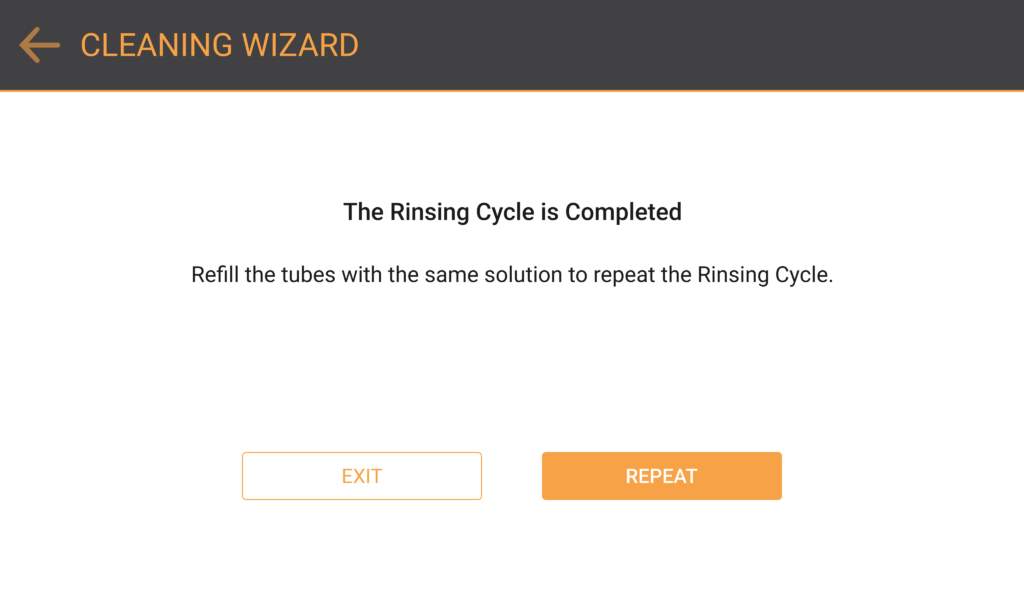µPULSE Filtration Chip Manual
This topic consists of three sections related to the µPULSE filtration chip: Safety and Use, Chemical Compatibility, and Filtration Chip Lifetime and Storage.
Important: Please read each section thoroughly in order to develop a better understanding of the µPULSE filtration chip. Ignoring the information in this document may lead to damage of the chip and the µPULSE instrument..
For your safety, please follow the warnings below before handling the chips, especially when you are cleaning the µPULSE filtration chip.
AVOID DIRECT CONTACT WITH EYES OR SKIN.
Chips are stored in a 0.05 % sodium azide solution. Sodium azide can be fatal if swallowed or if it makes contact with skin and can cause damage to neurological organs through prolonged or repeated exposure.
DISPOSE OF ACCORDING TO NATIONAL, REGIONAL, OR LOCAL STANDARDS.
Contents are toxic to aquatic life with long lasting effects and accumulation in copper pipes over time can result in an explosion. Make certain to check national, regional, and/or local standards before disposing of the sodium azide.
Warning! The µPULSE system and filter chips are not compatible with all chemical solutions. Use of solutions that are not recommended could damage samples, chips, or the µPULSE instrument. Damage resulting from improper solution use may void the device warranty.
Ratings for this table were made on the following basis:
- R = Recommended. The solution is recommended for continuous use with the µPULSE system.
- LTD = Limited Usability. Not for continuous use, further testing recommended.
- NR = Not Recommended. The solution is not recommended and may cause damage to the instrument.
- ND = No available data.
Chemical Solution Type/Name | Rating Status |
Acetic Acid (Diluted-5%) | R |
Acetic Acid (Med. conc-25%) | LTD |
Acetic Acid (Glacial) | NR |
Acetone | NR |
Acetonitrile | NR |
Ammonium Hydroxide (10%) | R |
Ammonium Hydroxide (50%) | LTD |
Amyl Acetate | NR |
Amyl Alcohol | NR |
Aniline | NR |
Benzene | NR |
Benzyl Alcohol | NR |
Boric Acid | R |
Brine | R |
Bromoform | NR |
Butyl Acetate | NR |
Butyl Alcohol | ND |
Butyl Cellosolve | NR |
Butyraldehyde | NR |
Carbon Tetrachloride | NR |
Cellosolve | ND |
Chloroacetic Acid | NR |
Chloroform | NR |
Chromic Acid | NR |
Citric Acid (2%) | R |
Cresol | NR |
Cyclohexane | NR |
Cyclohexanone | NR |
Diacetone Alcohol | NR |
Dichloromethane | NR |
Dimethyl Formamide | NR |
Dimethylsulfoxide (50%) | NR |
1,4 Dioxane | NR |
Ethers | NR |
Ethyl Acetate | NR |
Ethyl Alcohol | NR |
Ethyl Alcohol (15%) | LTD |
Ethylene Dichloride | NR |
Ethylene Glycol | R |
Ethylene Oxide | NR |
Formaldehyde (10%) | NR |
Formic Acid (50%) | NR |
Glycerine / Glycerol | R |
Hexane | NR |
Hexanol | NR |
Hydrochloric Acid (Diluted-5%) | R |
Hydrochloric Acid (10-30%) | NR |
Hydrofluoric Acid (4%) | LTD |
Hydrofluoric Acid (48%) | NR |
Hydrogen Peroxide (30%) | LTD |
Iodine Solutions | NR |
Isobutyl Alcohol | R |
Isopropanol | LTD |
Isopropyl Acetate | NR |
Isopropyl Ether | NR |
Lactic Acid (100%) | LTD |
Methyl Acetate | NR |
Methyl Alcohol | R |
Methyl Alcohol (98%) | LTD |
Methyl Chloride | NR |
Methyl Ethyl Ketone | NR |
Methyl Formate | NR |
Methyl Isobutyl Ketone | NR |
Methylene Chloride | NR |
N-Methyl-2-Pyrrolidone | NR |
Mineral Spirits | ND |
Monochlorobenzene | NR |
Nitric Acid (Diluted-10%) | LTD |
Nitric Acid (Med. conc-25%) | NR |
Nitric Acid (Conc-70%) | NR |
Nitrobenzene | NR |
Nitropropane | NR |
Oils, Mineral | R |
Pentane | NR |
Perchloric Acid (25%) | NR |
Perchloroethylene | NR |
Phenol (0.5%) | NR |
Phosphoric Acid (25%) | LTD |
Potassium Hydroxide (25%) | R |
Potassium Hydroxide (50%) | LTD |
Propanol | R |
Pyridine | NR |
Silicone Oil | NR |
Sodium Hydroxide (0.1M) | R |
Sodium Hydroxide (Diluted-5%) | R |
Sodium Hydroxide (25%) | R |
Sodium Hydroxide (Conc-50%) | R |
Sodium Hydroxide (Conc) | R |
Sodium Hypochlorite | R |
Sulfuric Acid (Diluted-5%) | R |
Sulfuric Acid (Med. Conc-25%) | NR |
Sulfuric Acid (conc) | LTD |
Tetrahydrofuran | NR |
Toluene | NR |
Trichloroacetic Acid (25%) | ND |
Trichlorobenzene | NR |
Trichloroethane | NR |
Trichloroethylene | NR |
Triethylamine | NR |
Turpentine | NR |
Urea | R |
Urea 8M | R |
Water | R |
Xylene | NR |
Please note the following:
- These recommendations assume pure solutions at room temperature and pressure without applied stresses.
- These recommendations assume that each polymer category has a uniform chemistry, molecular weight distribution, and thermomechanical history.
- The definition of solvent compatibility for our products differs from that used in determining the ratings given in published compatibility tables.
- This table does not consider solvent safety issues.
It is important to clean the transfer tubing and filter chip after it is used in order to prevent any cross-contamination, dried reagent buildup, and loss of efficiency. You can use the CLEANING WIZARD in the µPULSE software to clean your transfer tubing and filter chips, as shown in the following procedure.
Cleaning the Filtration Chip
Tools
- 50 mL of 0.1 M sodium hydroxide cleaning solution
- Water or buffer of your preference for rinsing
- Distilled Water
- Clean wipes
- A pair of rubber gloves
- Safety glasses or goggles
- Lab coat
Prerequisites
- Prepare a wipe soaked with some sodium hydroxide solution (NaOH). Then, gently clean the outside tube and the inside top area of the transfer tubing. To rinse off the sodium hydroxide, wipe the area with distilled water. For more information, see Liquid Compatibility.
Important: Use gloves to prevent personal injuries due to direct contact with harsh chemicals.
- You have inserted the permeate collector into its slot over the transfer tubing mount.
- You have inserted the permeate bottle into its position.
- You have turned on the instrument and opened the CLEANING WIZARD menu.
To clean the transfer tubing and filter chip:
- Fill the sample and buffer tube with 25 mL of 0.1 M sodium hydroxide.
- Insert the tubes and put the transfer tubing into position.
- Attach the filtration chip and close the chip cover.
- On the CLEANING WIZARD menu, fill in the Membrane Cut Off Size and the Cleaning Duration. Then, click RUN.
- When the cleaning process is finished, remove the tubes and dispose of the NaOH. To store the chip properly, jump to Storing the Filtration Chip section.
- Then, fill the tubes with water or buffer solution.
- Attach the tubes back to the instrument.
- Tap the RINSE button. The system will automatically set the cleaning duration for two minutes.
- OPTIONAL: To repeat the process, click the REPEAT button.
- Make sure to rinse the outside of the transfer tubing with distilled water or buffer solution to remove traces of the cleaning solution before using the chip and transfer tubing again. For more information, see Liquid Compatibility.
Important: If you are planning to leave your chips unused for a few days or more, follow the instructions in the Storing the Filtration Chip section below.
Storing the Filtration Chip
The µPULSE Filtration Chips are rated for 300 mL of trans-membrane flow. Over-use of the chips can result in a loss of sample or damage to the device. For reuse, chips must be stored in a sealed vessel with a bacteriostatic solution. Follow the instructions below to clean and store the chips properly.
Tools
- A sealable storage vessel
- 0.05 % sodium azide & 20% glycerol solution
Prerequisite
- You have prepared all of the tools above.
To store the filter chip:
- When the cleaning cycle has finished, take the sample and buffer tubes out and dispose of the cleaning solution in a safe container.
- Fill the sample and buffer tubes with 0.05% of sodium azide + 20% of glycerol or your preferred buffer solution + 0.05% sodium azide.
- Follow the on screen instructions to repeat the rinsing cycle. See the steps above.
- When the quick rinse cycle has finished, take the filtration chip out of the chip cover.
- Put the chip inside the storage vessel to avoid solution leakage.
Important: Leave the filter membranes wet and make sure the chips do not dry out. Otherwise, they will not function properly.
- Seal and store the vessel at a temperature between 4°C and room temperature.
- Label the stored chip with the total volume permeated, note this volume for your chip lifetime records. Dispose of the chip if the total volume permeated exceeds 300 mL, functionality of the chip beyond this can not be guaranteed.
Related Topics
FORMULATRIX® is proudly powered by WordPress


